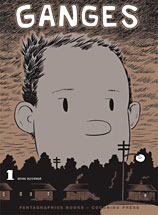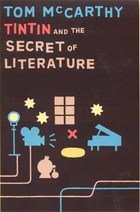 In an attempt to beat Dan to the manga-reviewing punch, I recently read the first volume of Path of the Assassin, another ninjas-and-samurai epic from Kazuo Koike and Goseki Kojima, the writer/artist team most famous for the legendary Lone Wolf & Cub series. I read the first four or so volumes of the Lone Wolf series a while back, but eventually got bogged down by the endless sword fights.
In an attempt to beat Dan to the manga-reviewing punch, I recently read the first volume of Path of the Assassin, another ninjas-and-samurai epic from Kazuo Koike and Goseki Kojima, the writer/artist team most famous for the legendary Lone Wolf & Cub series. I read the first four or so volumes of the Lone Wolf series a while back, but eventually got bogged down by the endless sword fights.
It was impressive enough, though, that I decided to give them another chance, especially since this Path of the Assassin series is 1) much shorter, and 2) more directly concerned with ninjas, which I’ve never seen handled in any kind of intelligent way before. (I’m sure Cold Heat will be an exception.)
Maybe ninja stories usually fail because assassins are basically repellent people; I don’t know.
In any case, I liked the first volume of this, though I have to admit much of the feudal politics and gender roles are a little off-putting. I don’t know what Japanese audiences make of this material, but 16th century Japan is almost totally alien to me, which is actually one of the things about it I found most appealing.
In fact, comics seem almost ideally suited as a medium for historical fiction (or non-fiction, for that matter). Unlike in straight prose, the comics artist can immerse the reader directly into the world visually, with unfamiliar clothing, vehicles, and tools depicted accessibly and immediately.
Movies can do this, too, but they aren’t able to easily impart a lot of the factual and contextual information needed without resorting to often clumsy exposition. (“Ever since Custer fell, Butch, the Sioux have been restless.”) Comics, on the other hand, can seamlessly include textual notes, glossaries, maps, et cetera, directly into the story.
Of course there have been many great historical comics. The late, lamented Jack Jackson specialized and excelled in them; and he could always be relied on not to cut out the good parts. Harvey Kurtzman’s period pieces from Two-Fisted Tales and Frontline Combat are still considered by many people (including me) to be a high-water mark for the medium.
This obviously isn’t a comprehensive list, but I’m somewhat surprised that more cartoonists haven’t attempted historical work. Joe Sacco’s Palestine and Safe Area Gorazde are at least partly in this vein, but I can’t think of too many other contemporary artists that apply. (Probably the comic book I am most looking forward to is R. Crumb’s adaptation of Genesis, especially after I learned that he was using Robert Alter’s astounding translation and annotation of the Five Books of Moses as a source.) Oh, and I almost forgot Maus! And Tezuka. And Jacques Tardi…
Anyway, time to end the rambling. I imagine that the biggest single reason that historical comics aren’t more prevalent is economic: research takes time, and readers aren’t particularly interested. (Jackson didn’t get rich off Comanche Moon, and Kurtzman’s war comics had to be subsidized by more popular EC series like Tales from the Crypt.)
And I guess, like a lot of things that I wish were better about the world of comics, that’s just the way it goes.
UPDATE: The more I think about it, the more period comics occur to me, from Enemy Ace to the World’s Fair sections of Jimmy Corrigan. I don’t know if that supports my post, or hurts it, or both.
UPDATE II: And Louis Riel! Maybe I’m just stupid…











